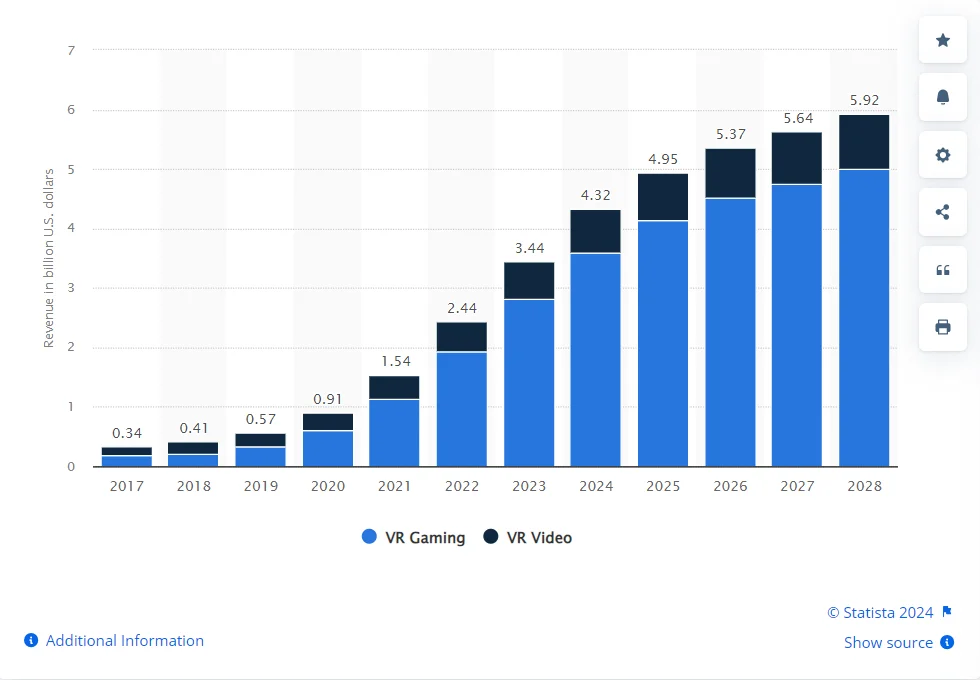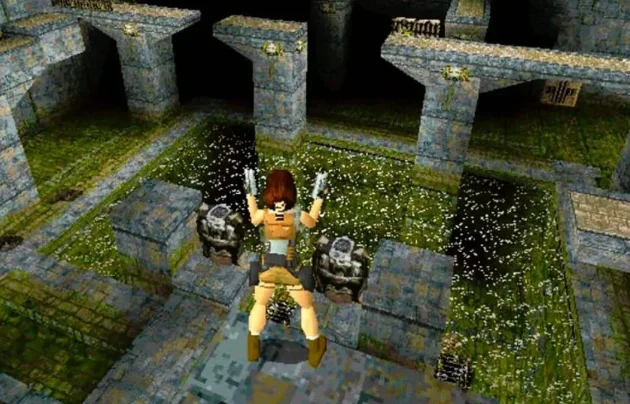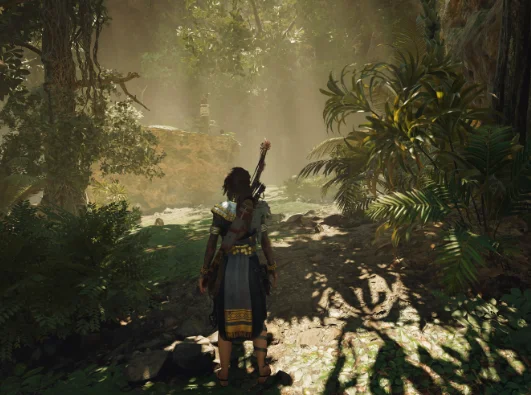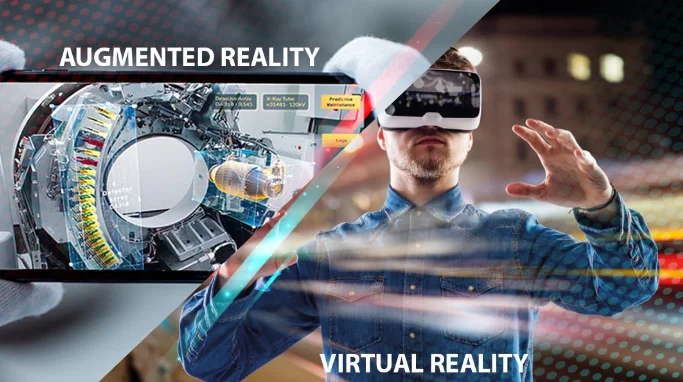Update: This article was last updated on 27th December 2024 to reflect the accuracy and up-to-date information on the page.
Gaming has seen tremendous change throughout its history, and probably the most fascinating aspect of this evolution is its graphics. This tour of gaming history is nothing short of spectacular.
In recent times, we have witnessed a quantum jump into the realm of immersive virtual reality experiences from the days of pixelated sprites.
In the following sections, we will begin on a chronological journey, charting the amazing journey that game visuals have taken over the years.
Recommended Reading: Gamification- why is gaming a teaching tool?
Virtual reality (VR) software B2C market revenue worldwide from 2017 to 2028, by segment (in billion U.S. dollars)

1. Pixel Art (1970s – 1990s)
Pixel Art, which was popular from the 1970s to the 1990s, ushered in the era of video games. It used a grid of tiny, square pixels to create images on the screen. Because of hardware constraints, graphics were frequently blocky and lacking detail. This era was typified by early arcade classics such as Pong and Space Invaders. Pixel art evolved alongside technology, resulting in more detailed and expressive 2D sprites. This era established the visual language of video games and it maintains a nostalgic appeal for many gamers today.
2. 2D Sprites and Hand-drawn Art (1980s – 1990s)
When 2D sprites and hand-drawn imagery were introduced in the 1980s and 1990s, the visual quality of games improved dramatically. Game designers progressed from crude pixel art to carefully polished, hand-drawn sprites. This enabled more complex and emotive characters and landscapes, bringing gaming to a new level of immersion. Super Mario Bros., Sonic the Hedgehog, and Street Fighter II were examples of this era’s artistic excellence. These games were famous, setting the groundwork for character design and animation techniques that still have an impact on the industry today.
3. Introduction of 3D Graphics (1990s)

In the 1990s, the rise of 3D graphics caused a major transformation in the gaming world. This technological advancement enabled the construction of immersive three-dimensional settings, which replaced the previously dominant two-dimensional graphics. This change was illustrated by games such as Doom, Quake, and Super Mario 64, which revolutionized gameplay experiences. Polygonal models and textured surfaces ushered in a new era of realism and depth, paving the way for a future in which 3D visuals would become the norm in gaming, forever altering how players interacted with virtual worlds.
4. Polygonal Models and Textures (Late 1990s – Early 2000s)

Polygonal models and textures started being used in the late 1990s and early 2000s, marking another revolutionary phase in gaming. This era saw a significant advancement in 3D graphics, with developers beginning to use polygonal models mixed with complex textures to produce more realistic characters and environments.
Final Fantasy VII, Tomb Raider, and Half-Life were early instances. This technical leap introduced previously unfathomable levels of clarity and depth to video games, boosting their immersive potential and setting the way for ever more visually spectacular experiences in the years to come.
5. High Definition (HD) Era (Mid 2000s – 2010s)

The use of High Definition (HD) in gaming began in the mid-2000s and lasted into the 2010s. With the introduction of increasingly powerful consoles and graphics cards, games achieved previously unseen levels of visual fidelity. This epoch saw the introduction of highly detailed textures, complicated 3D models, and realistic lighting effects.
Titles such as Gears of War, Uncharted, and Crysis demonstrated this generation’s potential, giving gamers astonishingly immersive environments. The HD era was a watershed moment in gaming visuals, providing visually spectacular experiences while pushing the bounds of storytelling and gameplay innovation.
6. Real-time Ray Tracing and 4K Gaming (Late 2010s – 2020s)

Gaming entered the era of visual splendor with the introduction of real-time ray tracing and 4K gaming in the late 2010s and early 2020s. By simulating how light interacts with objects in real time, this technology changed visual rendering, resulting in astonishingly realistic lighting, reflections, and shadows. With RTX, games like Cyberpunk 2077, Control, and Minecraft proved the power of this cutting-edge technology. This age, when combined with the rise of 4K resolution monitors, provided unprecedented visual fidelity, allowing players to immerse themselves in incredibly lifelike and meticulously detailed virtual worlds.
7. Virtual Reality (VR) and Augmented Reality (AR) (2010s – Present)

Gaming has embraced the revolutionary possibilities of Virtual Reality (VR) and Augmented Reality (AR) from the 2010s to the present. VR immerses gamers in completely virtual worlds, giving them an unmatched sensation of presence and involvement. VR titles such as Beat Saber and Half-Life: Alyx demonstrate the amazing capabilities of the technology.
AR, on the other hand, superimposes digital features on top of the actual world, as seen in games such as Pokémon GO. These technologies have not only broadened the boundaries of gaming but have also found applications in a variety of industries, predicting a potential future in which reality and virtuality coexist seamlessly.
Developer Perspectives: How Game Developers Shaped the World of Video Game Graphics
The journey of video game graphics is as much about technological advancement as it is about the vision and creativity of the game developers. Pioneers like Shigeru Miyamoto, the brainchild behind the iconic franchises like Super Mario and The Legend of Zelda, revolutionized the way players interact with virtual worlds. Miyamoto once said, “A delayed game is eventually good, but a rushed game is forever bad.” This philosophy underscores how carefully crafted graphics can enhance a game’s legacy.
Similarly, John Carmack is the genius behind Doom and Quake. He led the transition from 2D to 3D graphics by doing groundbreaking work on game engines that enabled realistic lighting and shadow effects and fully immersive environments.
These pioneers have faced technical and creative challenges that push beyond the boundaries of what’s possible. From overcoming hardware limitations to developing innovative rendering techniques, their contributions have defined the evolution of video game graphics as a medium for storytelling and artistic expression.
Future Trends in Video Game Graphics
The revolution in video game graphics is by no means over yet. Technological advancements only continue, and the future will unfold in ways that change the nature of visual experiences.
AI-Powered Procedural Generation
Artificial Intelligence is about to revolutionize the creation of game worlds. AI procedural generation will allow developers to create massive, detailed environments with minimal manual input. This technology is not only making video game graphics more complex but also dynamic and ever-changing, responding to player interactions. Imagine exploring a game where the environment evolves based on your decisions—this is the promise of AI-driven graphics.
Neural Rendering
Neural rendering, a cutting-edge technique which uses machine learning to produce ultra-realistic visuals, promises to revolutionize video game graphics. Neural rendering can capture real-world images and translate them into virtual environments with unmatched realism. This innovation blurs the lines between reality and digital, creating immersive experiences that are almost indistinguishable from life.
The Metaverse and Graphics Integration
The increased interest in the metaverse is going to create an astronomical demand for high-end video game graphics. Virtual environments of the metaverse are made up of hyper-detailed textures, realistic character models, and seamless interactions. Game developers are investing in these technologies that make these virtual spaces visually stunning and engaging, ensuring players experience true immersion in interconnected digital worlds.
Beyond 8K and Photorealism
While 4K and ray tracing now rule the current gaming world, the future will bring a quantum leap to 8K resolutions and more. All these developments will take video game graphics to previously impossible heights of photorealism. Water will be real-looking, reflections will be lifelike, and foliage will be intricately detailed and more. These are sure to take gaming to great heights.
Haptic Feedback and Graphics Synergy
Future innovations will not just be about what you see but also what you feel. Haptic feedback integrated with video game graphics will give the player the tactile sensations to match the visual stimuli. For instance, you could feel the texture of surfaces or the impact of actions in sync with what is displayed on the screen, adding another layer of realism.
Sustainability in Graphics Development
One emerging trend also is sustainable development practices with video game graphics. These energy-efficient techniques in rendering the graphics and environment-friendly processes help developers ensure games are more than just great looking but rather also environmentally conscious.
As these trends continue to unfold, the video game graphics landscape will continue to evolve, offering players increasingly immersive and awe-inspiring experiences. The future of video game graphics is not just about pushing boundaries—it’s about creating new possibilities for storytelling, interaction, and connection in the digital age.
Conclusion
To put it bluntly, the evolution of visuals in games has been one heck of a ride. Every generation has stretched what was possible, from low-resolution blocky pixels long ago to fully immersive virtual reality today. The trend for the future is clear-cut: gaming graphics will simply astound and captivate the players in ways even more realistic and immersive than today. This growth in visuals in games shows how much the gaming industry always seeks innovation and originality.
Moonpreneur is disrupting traditional education and future-proofing the next generation with holistic learning solutions. Its Innovator Program is building tomorrow’s workforce by training students in AI/ML, Robotics, Coding, IoT, and Apps, thereby making entrepreneurship possible through experiential learning.
























